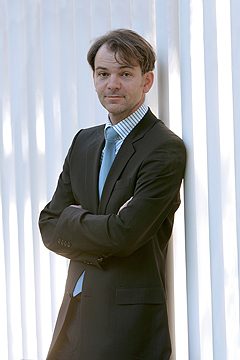Frankfurt show: EVs shape BMW design
BY TIM NICHOLSON | 18th Sep 2017

While the huge X7 iPerformance concept is a precursor to the imminent production-ready seven-seat SUV of the same name, the i Vision Dynamics concept provides an early look at a four-door coupe-style EV, likely to be dubbed the i5.
Speaking with Australian journalists at the Frankfurt motor show this week, BMW Group Design chief Adrian van Hooydonk explained some of the styling differences that will start to appear soon on future BMW models.
“On all of these cars we see a wider variety of grille design than you’ve seen in the last couple of years from us,” he said on the BMW stand last week. “That’ s also intentional. For our sporty vehicles we’re going to make them low and wide, but they have already grown together, so the centre chrome element is now one.
“That is something that you can trace back to our history actually in the 70s we used to have that on all our cars. The X7 Concept actually has that idea too, so they have grown together. But now they’re of course more vertical in nature because we feel that that would fit better to a car of that size and proportion.” Mr van Hooydonk said BMW models would start to have more of an individual design in the coming years as the overall design language evolves.
“We want to differentiate more within the BMW brand to pull the cars a little bit further apart. We are going to launch for the brand BMW six or seven new cars in the next two years. With that we wanted to take the opportunity and actually do a next step, a big step, in the design language too. And you see that in these two concepts (X7 iPerformance and the i Vision Dynamics), but also in the Z4 concept.
“It’s a design language that is cleaner, simpler, fewer lines, and the lines that we do have are sharper, crisper. Altogether, we feel that that form language will become more sophisticated. And of course, when you reduce the form language the details matter that much more. So both in the interior and exterior you”ll see some very tidily designed, very well detailed elements all around the cars.” He added that the company changed the design language “early enough” to ensure that all BMW models did not have the babushka doll look that some of its competitors have been accused of.
“We didn't want to fall into the trap of being too uniform. I think we haven’t yet, but we feel definitely that now is the right time. Also, with this momentum that we’re going to have with six new cars in the next three years, this was the moment that we had to seize to broaden the design language.”

“We will be able, on this new architecture, to do vehicles like this (i Vision Dynamics), which are sleek, elegant, dynamic, sporty. And that then for us means that, I think, we are set up well for the tipping point in electric mobility. We believe the tipping point will be reached when these cars are faster than normal cars, you have a range of, let’s say, 600kms, so equal to normal cars today, the design is emotional and desirable, and it has a certain amount of practicality, like four doors and a boot that you can use.
“This car is offering all of that, and so with a concept like this we believe we can take BMW i to the next level, which is volume.” The next-generation 3 Series is expected to be one of the first mainstream BMW models to benefit from the new design language, according to Mr van Hooydonk.
“Each new car going forward now we believe has to have a very strong character of its own, so the new 3 will be part of this new form language but also will have a couple of characteristics that are unique to that car.” He added that the new-gen X3 SUV, that had its public debut at Frankfurt, was on the “borderline” of the existing design philosophy and the incoming look.
“It’s also taking a step towards a stronger character because that’s what we want from each of our cars. It's a car that has become more robust, a little bit bigger, a little bit tougher looking. The grille is also a little bit bigger already. Not as tall as on the X7, but of course it’s a different vehicle.
Mr van Hooydonk said the shift from internal combustion engines to electric powertrains would have a huge impact on automotive design, but not for another 15 years.
“I think in terms of design it will be a big step, and that won’t go away. I think it will transform the whole industry and, if I have something to do with it at least for our company, cars will look different after that transformation. They will have taken a jump in modernity, and that’s what we are showing here but that’s also what we are aiming for in production.
“Then if we are, let’s say, now beyond 2030 perhaps and all cars are electric and combustion engines maybe are completely gone, then architecture could change again and vehicles could possibly become a little bit more compact again.”